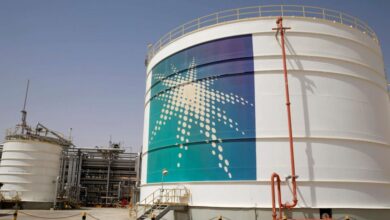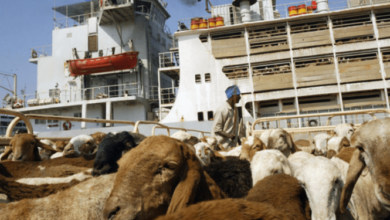Gulf tensions and war in Yemen threaten Saudi’s oil exports

US reports have questioned the feasibility of the current Saud House regime for exporting oil through alternative ports to the Strait of Hormuz following recent attacks on its oil tankers.
There are risks to the Kingdom if the Red Sea is used to export its oil instead of the Gulf or the Strait of Hormuz, one of the world’s most important oil export routes, Bloomberg said.
The Saud House system is expanding the Petrolain pipeline, which stretches from oil fields in the east of the Kingdom to its Red Sea ports. The expansion project aims to increase the capacity of the pipeline from 5 million barrels per day to 7 million barrels.
According to informed sources, Saudi is expected to complete the expansion project in September, but a financial report by Aramco shows that the completion of the work will take four years.
Bloomberg explained that the pipeline could be attacked by aircraft march, as in May, when the Houthis attacked by aircraft the facilities in the pipeline.
Bab al-Mandab Strait, linking the Red Sea to the Indian Ocean, is as risky as the Strait of Hormuz, the agency said recalling that two Saudi oil tankers were attacked in the Bab al-Mandab strait last year, prompting Saudi Arabia to halt its crude exports across the Straits of Yemen.
The agency added that the Kingdom after the incidents that have been exposed to the Strait of Hormuz in the past period is concerned about its use in the export of its oil, so it examines all other options.
The alternatives to Saudi depends on the developments in the military tension in the Gulf region. They are also very expensive and take some years to implement, especially large projects such as the Saudi pipeline proposal via Yemen and the proposed pipeline from Dubai.
Other alternatives proposed by S & P Plats, “Canal Salman”, were proposed by the Center for the Arab Century for Saudi Studies in Riyadh and the system requested a study.
The study, prepared by the Saudi Center, proposes the construction of a 950-kilometer canal at an estimated cost of $ 80 billion linking the Arabian Sea to the Arabian Gulf. According to the study, the channel will make its way through the Kingdom along 630 kilometers, and then pass through Yemen along 320 kilometers.
The United States is seeking to build a global naval alliance to form a naval force to guard the freedom of navigation in the Gulf region. So far, Britain and some European countries have agreed to participate in this force. British naval forces are currently escorting British-flagged vessels through the Strait of Hormuz. The United States has pledged to provide maritime protection to Gulf oil tankers.
Japanese Prime Minister Shinzo Abe, who imports about 3.5 million bpd from the Arab region, is expected to agree to send a naval force to the Gulf.





